How to prevent condensation in a tent
How to prevent condensation in a tent
A Kiwi Camping guide on condensation, and how our tents are specifically designed to combat this.
Dealing with condensation on camping trips can put a damper on things. Waking up to a damp and uncomfortable tent or sleeping bag in the morning is not ideal. While avoiding condensation altogether is challenging, you can take some simple steps to minimise its impact. Read below about where condensation comes from, what you can do to minimise it, and the features in our Kiwi Camping tent designs that work to combat it. Condensation is the moisture that forms inside your tent or sleeping bag when warm air meets cold surfaces after a chilly evening. You can think of it like a cold beverage on a hot day, where droplets form outside the container. Similarly, warm air inside your tent moves out to the rainfly, which is cooler due to the outside air temperature. This temperature difference leads to condensation on the underside of your rainfly. Exhaling during sleep also adds to the moisture inside the tent. Multiple people in the tent can increase condensation, which might be mistaken for a leak. Condensation can be caused by:
- Your breath
- Wet clothing or gear stored inside the tent
- Natural humidity in the air
- Change in temperature
Over the night, these sources of moisture can accumulate and cause dampness. Excess condensation can grow mould, damaging your tent fabric over time. So, let’s explore some practical ways to prevent condensation. There are three key ways to minimise condensation while camping, tent placement, minimising additional sources of condensation and ventilation.
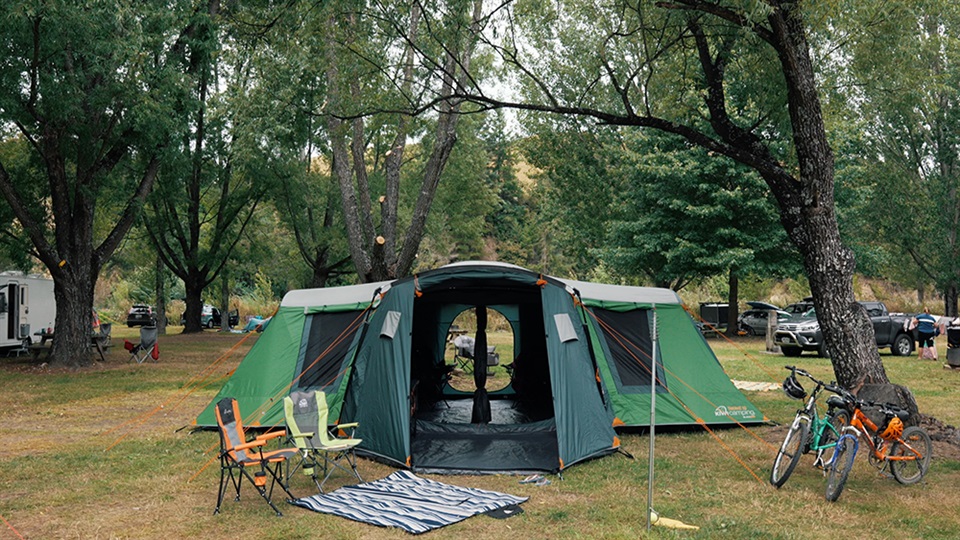
TENT PLACEMENT
Choosing the right location for your tent can significantly reduce condensation. Opt for spots under trees, as the air beneath the canopy tends to be warmer. This, in turn, keeps your rainfly warmer and minimises condensation forming on top of your tent. Alternatively, if you want to pitch out in the open, pitch the end of the tent into the wind to enable increased airflow around the tent.
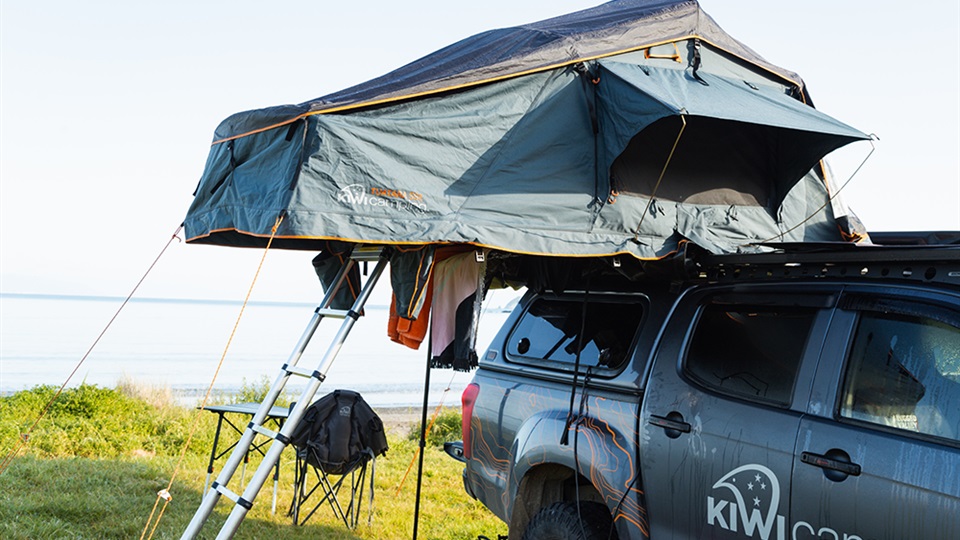
MINIMIZE ADDITIONAL SOURCES OF CONDENSATION
Avoid hanging wet clothes or gear inside your tent, as it will worsen condensation. For family tents, consider using an elastic clothesline like the Kiwi Camping clothesline around the outside of your tent. Smaller swags or hiker tents can use nearby trees or points for hanging gear. If you have a rooftop tent, consider leaving damp clothes under an awning or in your car to keep the interior dry.
Check out the Kiwi Camping Elastic Clothesline with eight pegs included. It’s a fantastic accessory that packs up small and proves handy for family camping, touring and evening hiking!
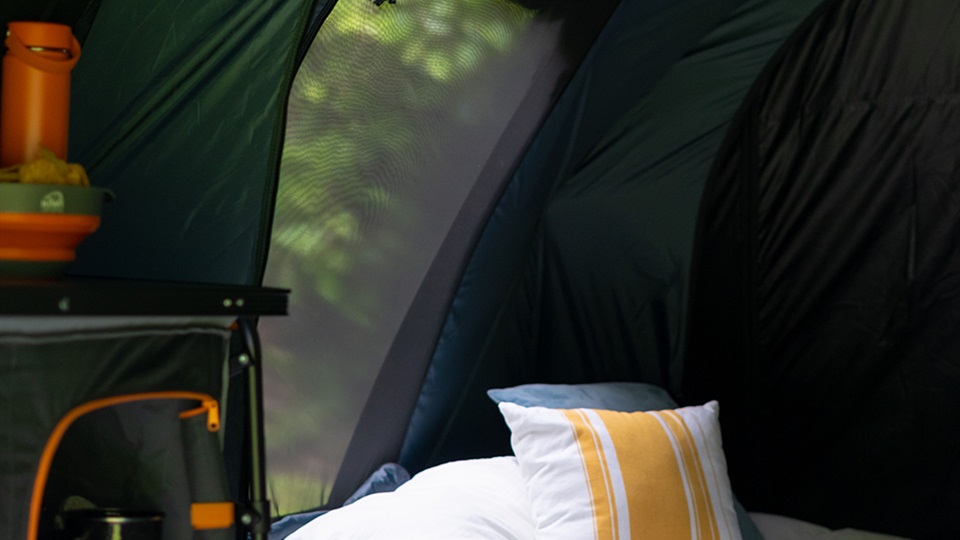
VENTILATION
Leaving your tent windows slightly unzipped when possible promotes airflow and reduces condensation. Though it might seem counter-intuitive during colder weather, this allows the air you exhale to escape before it turns into water. If you own a Kiwi Camping tent, you can roll your windows up while keeping the bug-proof mesh zipped down, allowing air to flow in while keeping pesky NZ bugs out!
Using a sleeping bag rated for the specific camping season is also essential, as it will keep you warm and your tent dry in colder or damper areas of New Zealand.
How does a double-wall tent compare to a single?
Double-walled Tents
A double-walled tent consists of two main layers: a rainfly made of waterproof fabric and a separate inner tent with large mesh and breathable solid fabric panels. When you pitch this type of tent, there’s a gap between the rainfly and the inner tent, allowing air to flow through. This design dramatically minimises internal condensation transfer from the tent walls to sleeping bags, mats, or gear. Instead, moisture passes through the mesh of the inner tent and collects on the inside of the rainfly, keeping your gear dry. Examples of tents with this design include the Kiwi Camping Weka and Pukeko Hiker Tents.
Single-Walled
On the other hand, single-walled tents offer a considerably more lightweight option for hikers and backpackers covering longer distances. These tents have just one layer of fabric, which serves as the rainfly and the sleeping area, reducing overall weight. Insect netting is usually added to doors, windows, or walls for improved ventilation. When you set up a single-walled tent, the interior doesn’t get wet during rainfall since it’s all set up simultaneously. However, these tents are more susceptible to condensation transfer from the walls to your sleeping bag and gear due to leaning against the fly, as there is no barrier between them and the outer tent wall. Single-walled tents with mesh panels in the tent walls can be colder and draftier. Canvas tents are an obvious exception, less susceptible to condensation and more breathable. However, keeping all gear and being such as camping mats, stretchers, chairs, and more kept off the sides is still necessary. Furthermore, using a fly to angle over your single-walled tent like the Kiwi Camping Kereru will provide another layer of protection to help stop condensation and allow you to open the tent for better venting while staying dry.
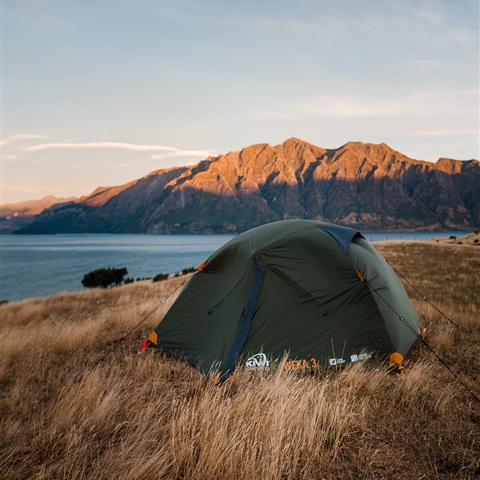
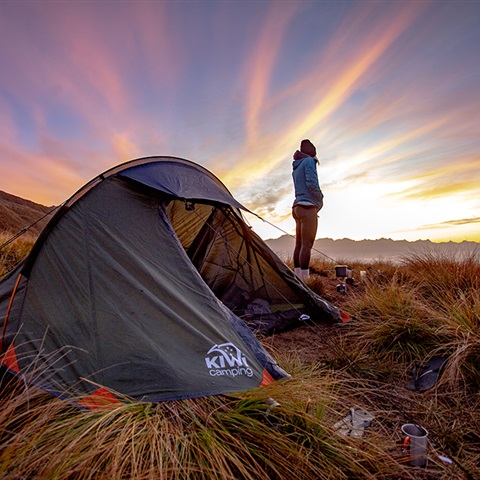
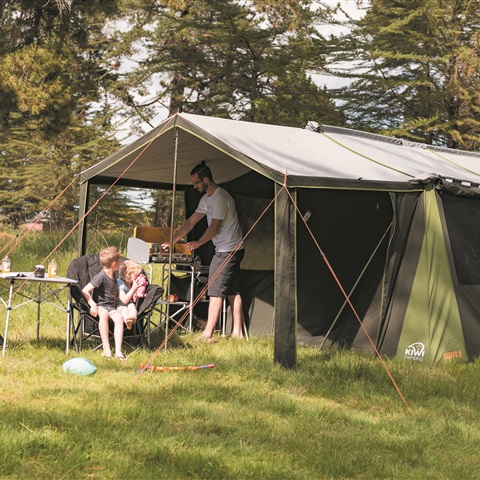
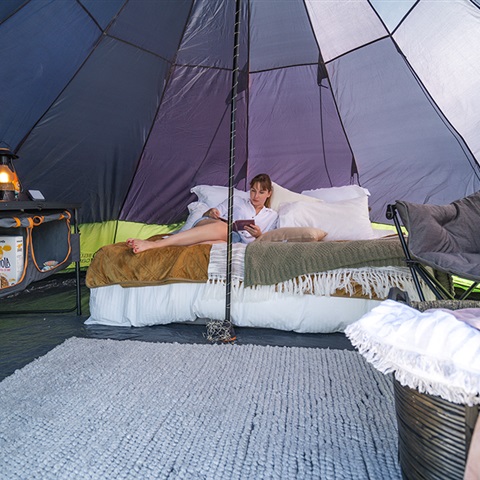
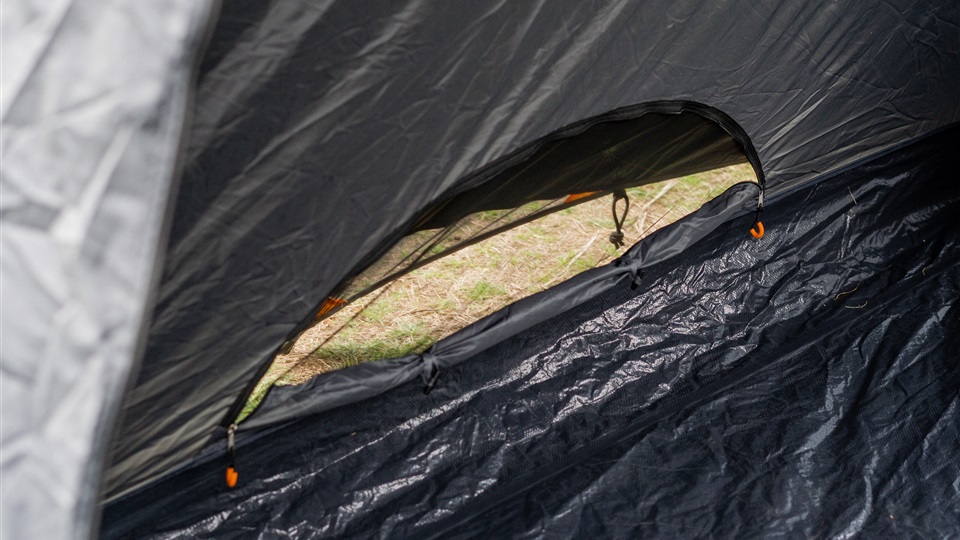
KIWI CAMPING TENT DESIGNS
So how do Kiwi Camping tents compare when it comes to preventing condensation? We purposely design our tents with the necessary features to minimise condensation, including ventilation ports, a unique airflow system, no-see-um mesh and three-way windows, all to allow ample circulation throughout the tent.
Air Ventilation Ports
The ventilation ports give hot air a place to escape, dramatically decreasing condensation. You’ll find these included in the following Kiwi Camping tent designs:
Takahe family range
Kea 4E, Kea 5E and Kea 6 Recreational Tents
Bellbird Teepee Tent
Weka 2 & Weka 3 Hiker Tents
Tuatara Summit Extended and Peak Rooftop Tents (launching September 2023)
Savanna and Habitat Camping Shelters
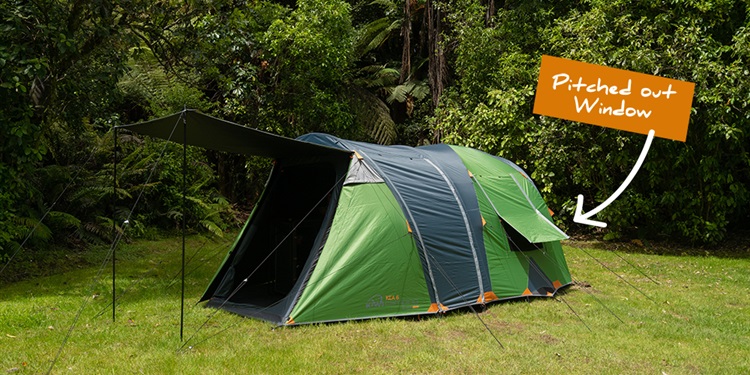
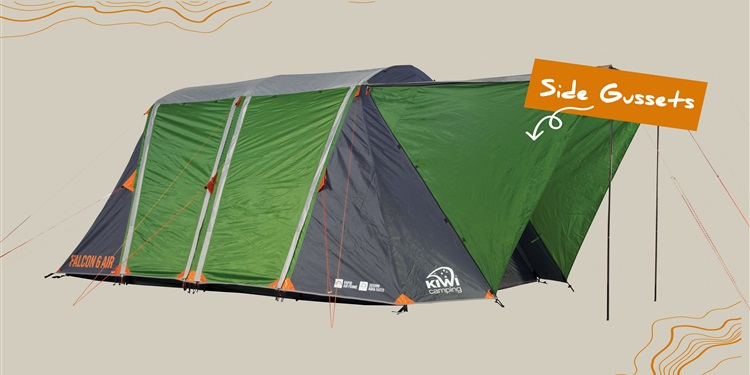
Unique Air Flow System
In NZ, the temperature variance from day to night can be extreme. With this in mind, we include vents positioned to provide the greatest airflow through the tent during the day; at night, they can be left open to keep air flowing around the tent to help prevent condensation build-up if it gets too cold. These can also be shut to trap the warm air trapped inside the tent during the day.
Located at the base of the tent above the PE floor in the tent, as the wind hits the tent, it pushes cold air in and circulates the warm air at the top of the tent, helping to prevent the build-up of condensation.
This feature is unique to our Takahe family tents, Kea Recreational tents, Falcon Air, Falcon Ezi-Up, Hihi Ezi-Up, and Bellbird tent; all the air vents on these tents have been designed to be used in all weather conditions and will stay dry. The windows on these tents can also be pitched out to allow for an extra venting point, and when pitched out, it will help to prevent water from entering the tent.
Shop Our Featured Products
Explore popular and best-selling Kiwi Camping products from across our ranges.


